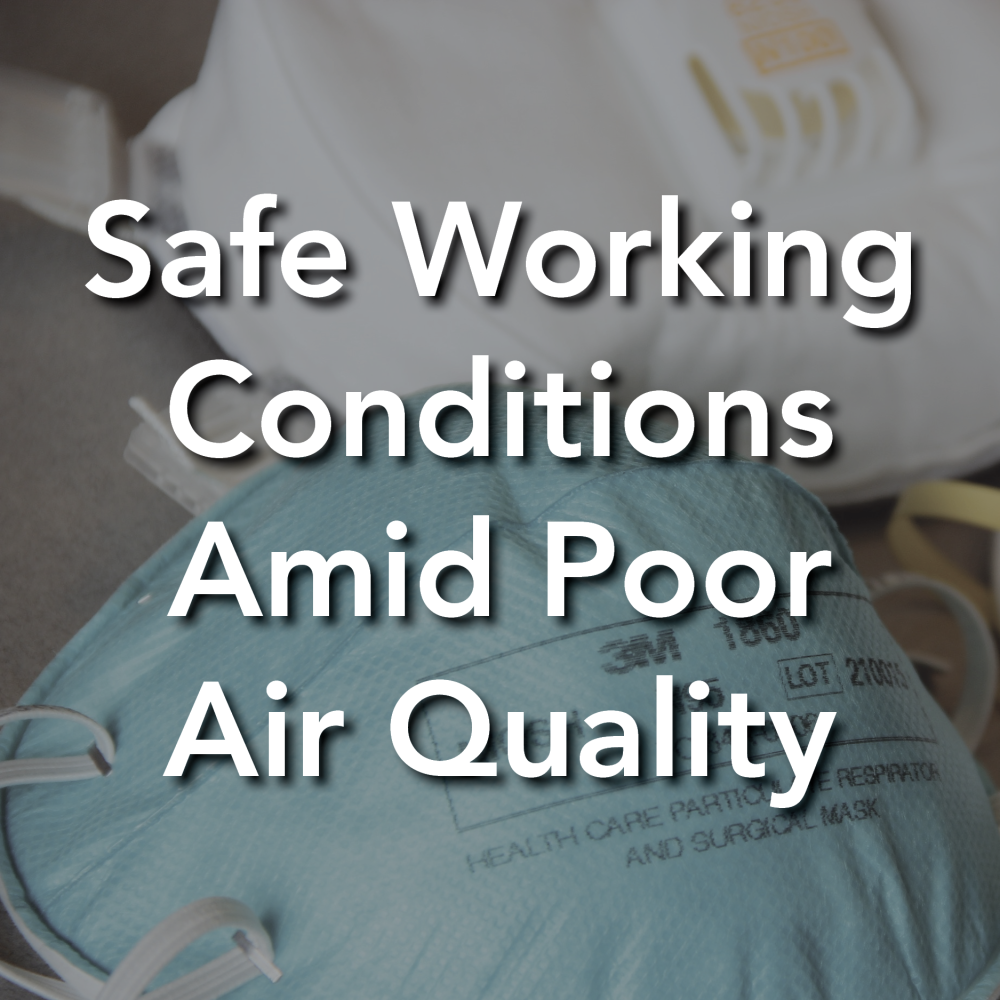
Another day, another air quality alert.
As construction professionals, we are no strangers to the challenges posed by nature. However, when the air quality is severely impacted by external factors (such as wildfires in Canada), it becomes very necessary to prioritize the safety and well-being of our teams. Over the month of June, there have been numerous reports from the National Weather Service highlighting the up-and-down air quality in Minnesota (we had the worst air quality in the country last Wednesday, June 14), making it crucial to adopt appropriate measures and utilize specific types of gear to mitigate the risks.
Here, we discuss the importance of safe working conditions and provide guidelines, along with recommended gear, for construction professionals operating outdoors during times of awful air quality.
Understanding the Risks
Wildfire smoke can contain harmful pollutants and particulate matter that can significantly impact air quality. These fine particles can penetrate deep into the respiratory system, causing respiratory issues, eye irritation, and exacerbating existing health conditions. Prolonged exposure to poor air quality can have severe consequences, and it's best to be proactive in addressing these risks.
Monitor Air Quality
Stay updated with the latest information from the National Weather Service or local authorities regarding air quality index (AQI) readings. Utilize reliable air quality apps or websites to track real-time data for your specific area.
Some popular air quality apps include:
• AirNow - The official app from the United State Environmental Agency (EPA) provides real-time AQI information and forecasts for various locations.
• Plume Labs - This app offers personalized air quality forecasts, real-time pollution apps, and health recommendations based on your location.
• BreezoMeter - Breezeometer provides hyperlocal air quality data, along with a user-friendly interface, to help you stay informed about the air quality conditions in your area.
• IQAir - Known for its air purifiers, IQAir also offers an app that provides real-time air quality information, personalized health recommendations, and historical data analysis.
• PurpleAir - This app utilizes data from a global network of air quality sensors to provide real-time air quality information, including particle pollutions (PM2.5 and PM10) levels.
Please Note: It's recommended to check your local region for specific air quality apps that may be more relevant and accurate for your area.
Adjust Work Schedules
Whenever possible, consider rescheduling outdoor activities to periods with better air quality. If the work cannot be postponed, plan tasks in a way that minimizes exposure during peak pollution times.
Personal Protective Equipment (PPE)
Important pieces of PPE on days with low air quality should include Respiratory Protection with N95 or higher-rated masks, which offer effective filtration against harmful particles present in wildfire smoke. Fit-testing should be conducted to ensure a proper seal. Eye Protection, such as safety glasses or goggles, should be encouraged to protect the eyes from smoke and irritants. Depending on the nature of the work, consider providing gloves for Hand Protection against hazardous materials and irritants.
Create Safe Zones
Establish designated areas with clean air where workers can take breaks from the poor air quality. These zones should ideally be indoors or protected by effective air filtration systems.
Signs to watch for among your workers for potential illness due to the poor air quality:
• Respiratory Symptoms - coughing, wheezing, shortness of breath, or chest tightness.
• Irritated Eyes, Nose + Throat - watery or itchy eyes, a runny or congested nose, and a sore or scratchy throat.
• Headaches and Dizziness - persistent headaches, dizziness or lightheadedness.
• Fatigue + Weakness - unusually tired, weak or a general lack of energy not typical.
• Allergic reactions - frequent sneezing, nasal congestion, skin rashes, or hives.
• Worsening of Existing Health Conditions - illnesses such as asthma or chronic obstructive pulmonary disease (COPD) can easily become exacerbated.
Please Note: Signs may vary from person to person, and the severity of symptoms can also differ.
Hydration and Rest
Encourage workers to stay well-hydrated and take regular breaks in a clean environment, helping reduce fatigue and ensuring their overall well-being.
Education and Awareness
Conduct regular safety meetings to educate your team about the risks associated with poor air quality and the importance of adhering to safety guidelines. Encourage open communication and address any concerns or questions they may have.
-------
The health and safety of our workers should always be our priority, especially when faced with challenges such as severe air pollution. By closely monitoring air quality, encouraging workers to seek medical attention if they're feeling unwell, and utilizing specific types of gear such as N95 masks, safety glasses, and gloves, we as an industry can ensure a safer working environment.
Remember, proactive steps taken today will go a long way in safeguarding the well-being of our teams and mitigating potential health risks. Stay informed, stay safe!